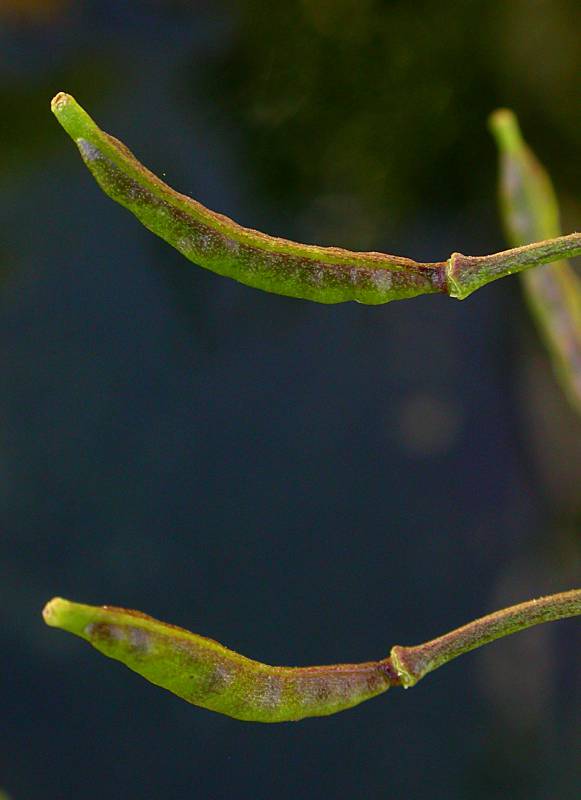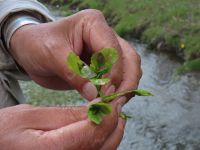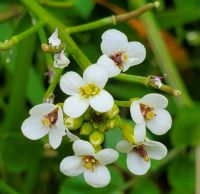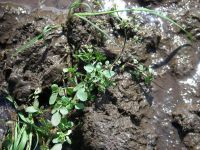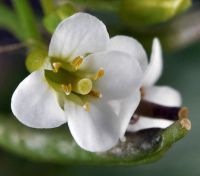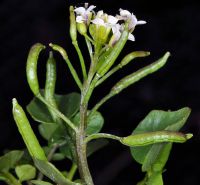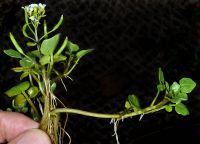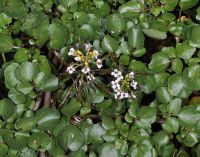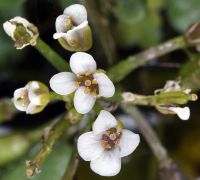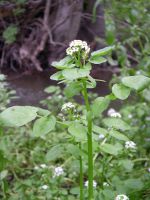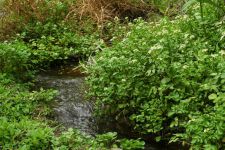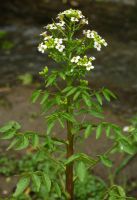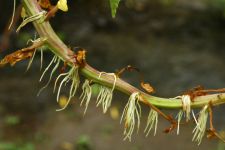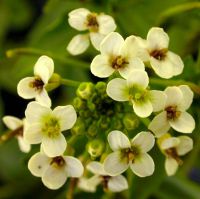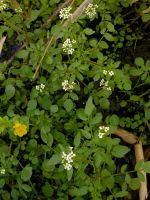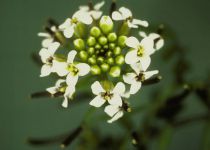Distribution: Occurring on both sides of the Cascades crest in Washington; Alaska to California, east across North America to the Atlantic Coast.
Habitat: Riparian zones and other wet areas.
Flowers: May-September
Origin: Introduced from Europe
Growth Duration: Perennial
Conservation Status: Not of concern
Pollination: Bees, flies, butterflies
Aquatic, glabrous perennial, the stems often floating and rooting at the nodes, fleshy, limp, 1-5 dm. long, only the tip erect.
Leaves alternate, pinnate, the 3-11 segments ovate to lanceolate, the terminal lobe much the largest.
Inflorescence of flat-topped, bractless racemes, elongate in fruit; pedicles 8-20 mm. long, spreading; sepals 4, whitish, the outer pair saccate at the base; petals 4, white to purplish-veined and -tinged, broadly spatulate, 3-4 mm. long; stamens 6; style stout, 1 mm. long, the stigma bi-lobed.
Siliques mostly about 15 mm. long and 2 mm. broad, spreading, curved, and somewhat erect; seeds in 2 series.
Publication: Hortus Kew. 4: 110. 1812.
Sisymbrium nasturtium-aquaticum L.
PNW Herbaria: Specimen records of Nasturtium officinale in the Consortium of Pacific Northwest Herbaria database.
WA Flora Checklist: Nasturtium officinale checklist entry.
OregonFlora: Nasturtium officinale information.
E-Flora BC: Nasturtium officinale atlas page.
CalPhotos: Nasturtium officinale photos.
USDA Plants: Nasturtium officinale information.



